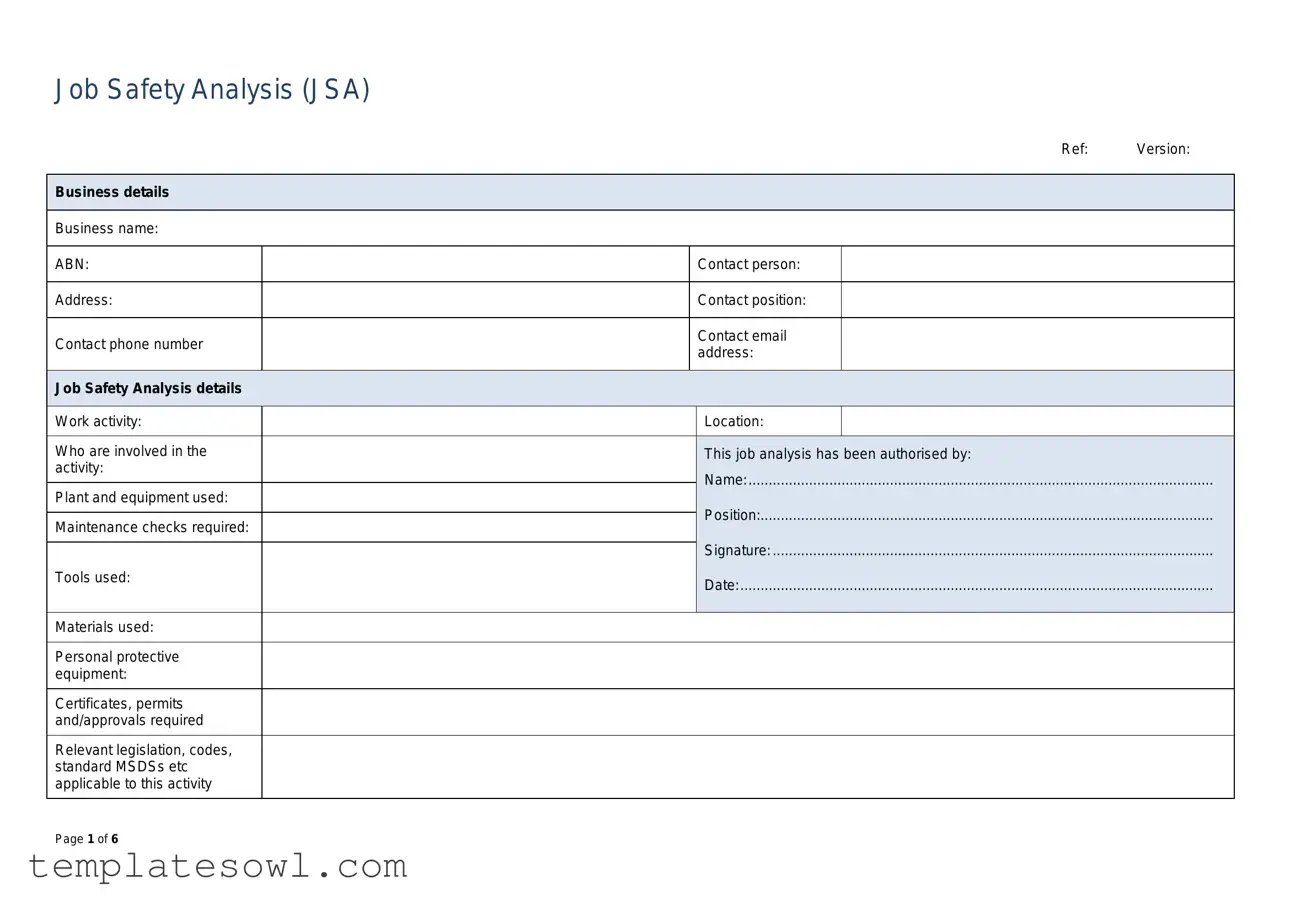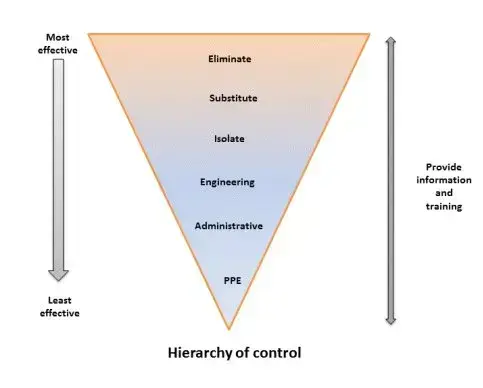What is a JSA form?
A JSA form, or Job Safety Analysis form, is a tool used to identify and analyze potential hazards associated with specific job tasks. It outlines safety measures to prevent accidents and injuries in the workplace. The form provides a structured approach to evaluating risks and implementing controls to ensure a safe work environment.
Why is a JSA important?
A JSA is crucial for maintaining workplace safety. It helps organizations systematically identify hazards associated with a task before work begins. By doing so, it minimizes the risk of accidents and injuries, enhances compliance with safety regulations, and promotes a culture of safety within the organization.
Who should complete the JSA?
The JSA should be completed by individuals familiar with the job or task at hand. This often includes supervisors, safety officers, and the workers who will be performing the task. Involvement from employees ensures that the analysis reflects real-world scenarios and hazards they may encounter.
How do you assess risk using the JSA?
Risk assessment in a JSA involves evaluating the likelihood of an incident occurring and the possible consequences of that incident. The risk rating table included in the JSA helps categorize risks into various levels: low, moderate, high, critical, or catastrophic. Each job step is assessed to determine its associated risks.
What controls can be included in a JSA?
Controls in a JSA follow a hierarchy that prioritizes eliminating hazards first, then substituting them, using engineering controls, implementing administrative controls, and, as a last resort, using personal protective equipment (PPE). Each type of control should aim to minimize risk effectively.
How often should a JSA be reviewed?
A JSA should be reviewed regularly, especially when there are changes in the work process, equipment, or any incidents occur. A review ensures that the information remains relevant and that the safety measures continue to protect workers effectively.
What happens if risks are identified as critical or catastrophic?
If risks are identified as critical or catastrophic, immediate action is required to mitigate those risks. This may include halting work until control measures are implemented. The goal is to eliminate or significantly reduce the hazard to an acceptable level before any work proceeds.
What are the responsibilities of employees regarding JSAs?
Employees must actively participate in the JSA process. They should report hazards, follow safety procedures outlined in the JSA, and wear the required personal protective equipment. Their engagement is key to ensuring a safer work environment.
Is training necessary when using a JSA?
Yes, training is essential. Employees should be trained on how to conduct a JSA, understand the risks associated with their tasks, and know the procedures and controls implemented to manage those risks. This knowledge empowers them to work safely and effectively.
What documentation should accompany a JSA?
A JSA should be accompanied by relevant documentation, such as safety data sheets (MSDS), permits, approvals, and any legislative requirements. Keeping comprehensive records helps ensure compliance with safety regulations and provides a reference for future analyses.




 How to control risks***
How to control risks***
 How to control risks***
How to control risks***
 This job safety analysis has been developed through consultation with our employees and has been read, understood and signed by all employees undertaking the works:
This job safety analysis has been developed through consultation with our employees and has been read, understood and signed by all employees undertaking the works: